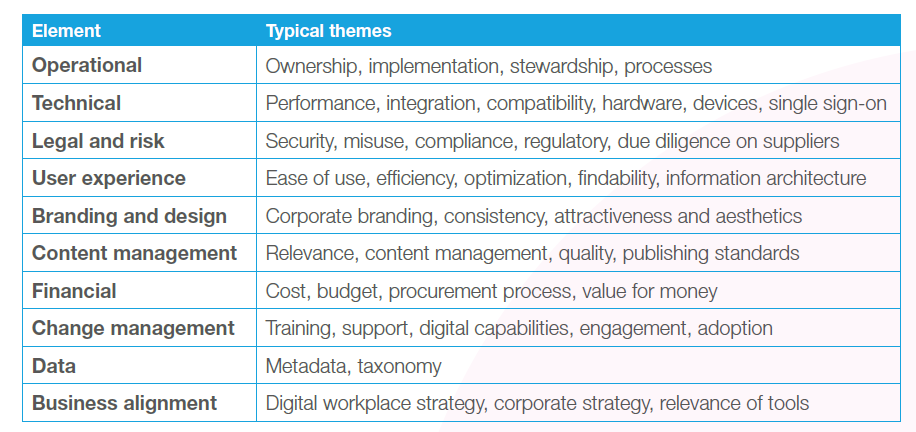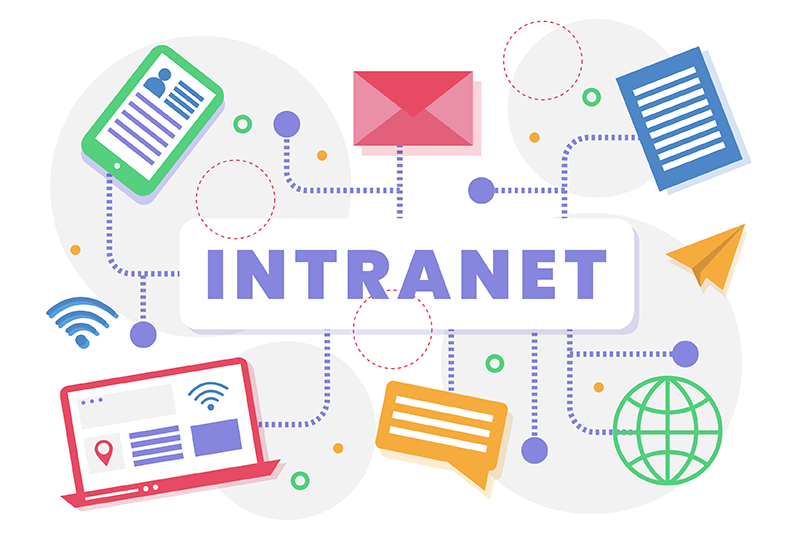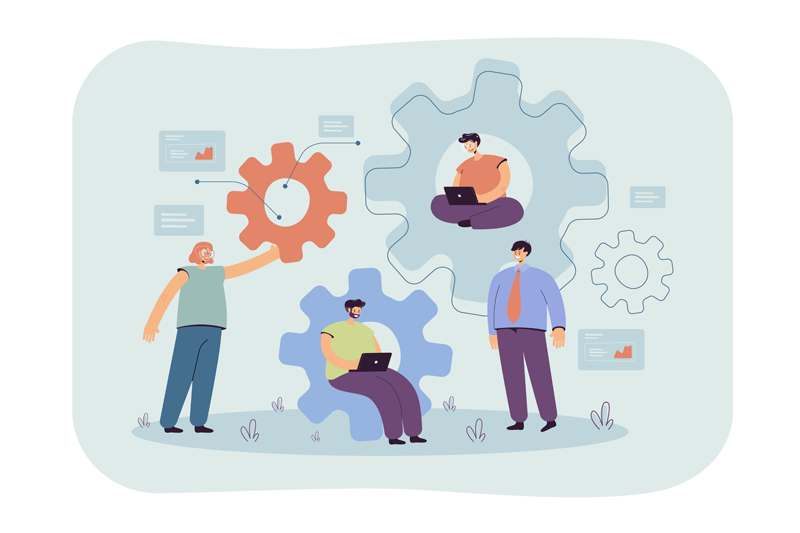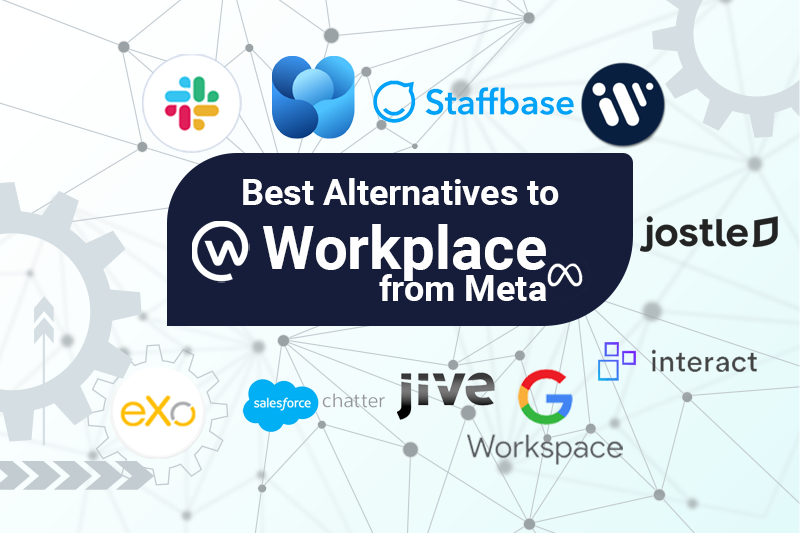- Brahim Jaouane
- April 25, 2017
Digital Workplace Governance or the Foundation to a Secure Digital Transformation
Data privacy and security matters are recurring issues nowadays that IT leaders need to address. In our increasingly connected world and with the new technology available today, such as the cloud, big data and analytics tools, machine learning and AI as well as IoT, data is now at the center of the digital world.
If you are an active follower of our blog, you may already know how we view data privacy and how open source is tackling security issues.

Content
In this piece, we would like to present the big picture by thinking more broadly about how you can prepare for digitalization and what is at stake concerning your digital workplace.
We believe that the starting point for tackling security matters, your data privacy concerns, and how to reach total ownership of your content is first to set up the ways and means for handling data or content and behaving in your digital workplace.
This set of standards and procedures are what we call digital workplace governance.
1. Preliminary Steps to Building Your Digital Workplace Governance
Companies that hope to harvest the benefits of having a digital workplace, namely mobility, enabling knowledge sharing and collaboration, minimizing redundancy, and finally, maintaining security, need to cope with several constraints:
- You cannot transfer your existing governance framework and procedures from a traditional to a digital workplace.
- Document management and storage systems are not enough for organizations to enable digital collaboration to its fullest potential.
- Taking the time to define and articulate a digital governance strategy will be a critical factor in achieving the objectives of the digital workplace.
Keeping that in mind, we can now describe the steps needed to define a robust and sustainable digital governance framework.

FREE WHITE PAPER
Types of Digital workplace solutions
The modern workplace has evolved significantly in recent years, with advancements in technology, the growing number of tools …
2. Being Organized
First, if you have already faced the challenge of building an IT governance strategy and framework, you may feel that an overwhelming task of establishing the right processes, rules, and structure for a wider portfolio of applications and challenges is ahead.
Well, organization is critical. The key to avoiding chaos is highlighting what information should be posted to everyone vs what should be kept in more dedicated spaces, but also ensuring that employees know when to use certain features of your collaboration platform.
Think of it as if you were the architect of your digital workplace, and the governance is the plan to build it.
3. Understanding What Digital Workplace Governance Involves
According to a recent study from the Digital Workplace Group, who are independent experts in digital workplaces, digital workplace governance is defined as “the policies, structures, roles, rules, processes and standards that need to be applied for the digital workplace to run optimally and be sustainable.”
Furthermore, setting a strategy and KPIs to track the implementation of your governance framework is also key. This study also identifies a range of components and themes that need to be taken into account in any framework:

In light of all of these components, the task may seem pretty discouraging. We will, however, try to provide you with some insights on how to help your organization navigate through this.
4. Collaborate with Key Stakeholders in Setting up Your Digital Workplace Governance
Nowadays we know that good governance relies heavily on the business/IT alignment, but to create value, change management should also come under the scope of the business/IT alignment.
This is where the key stakeholders of your organization must participate. Indeed, the core of digital workplace governance defines the structure that owns, provides, and governs the workplace.
A cross-functional structure might be necessary for setting the standards and procedures to guide the different users of your workplace, from the IT department (perhaps excluding certain third-party applications) to internal communication and HR stakeholders who may be in charge of part of the user experience.
5. Build up Your Framework
Setting up a framework on how governance will be practiced can help stakeholders understand what needs to be done.
Preferably this governance should be in place before projects are implemented, so it is important to define its area of focus. Some of the key questions to consider are:
- What is the scope of your digital workplace governance?
- Which channels and applications are covered?
- Did you include change management in your framework?
- What are the key roles? Who participates in the process?
- How centralized or decentralized is your governance?
- What are the metrics and KPIs?
- How do you differentiate your governance for applications? What about content?
- How does governance change over application and content lifecycles?
Building your digital workplace governance will not be effortless. However, you must start somewhere.
Some governance is better than no governance, as it will formalize the usage of your digital workplace (thus your data), allowing your organization to collaborate efficiently while making sure that sensitive information is handled safely.
A Digital Workplace tailored to your needs
Discover How To Boost your employee
engagement and performance
engagement and performance

Julian dubois
Je suis expert solution chez eXo Platform.
Mon rôle est d’accompagner les clients dans le déploiement de leur projet de plateforme et l’accompagnement au changement lié à ce projet. J’ai piloté et administré une Digital Workplace pendant 3 ans avant de rejoindre eXo Platform.
Améliorer l’environnement et les conditions de travail m’a toujours passioné, je peux maintenant accompagner nos clients dans cette démarche.
Related posts
- All
- eXo
- Digital workplace
- Employee engagement
- Open source
- Future of work
- Internal communication
- Collaboration
- News
- intranet
- workplace
- Knowledge management
- Employee experience
- Employee productivity
- onboarding
- Employee recognition
- Change management
- Cartoon
- Digital transformation
- Infographic
- Remote work
- Industry trends
- Product News
- Thought leadership
- Tips & Tricks
- Tutorial
- Uncategorized
Laisser une réponse
( Votre adresse email ne sera pas publiée)



Insightful read Walid! What I understand from here is that governance will help your intranet function optimally. Also, keep in mind that a robust governance equates to great intranet.